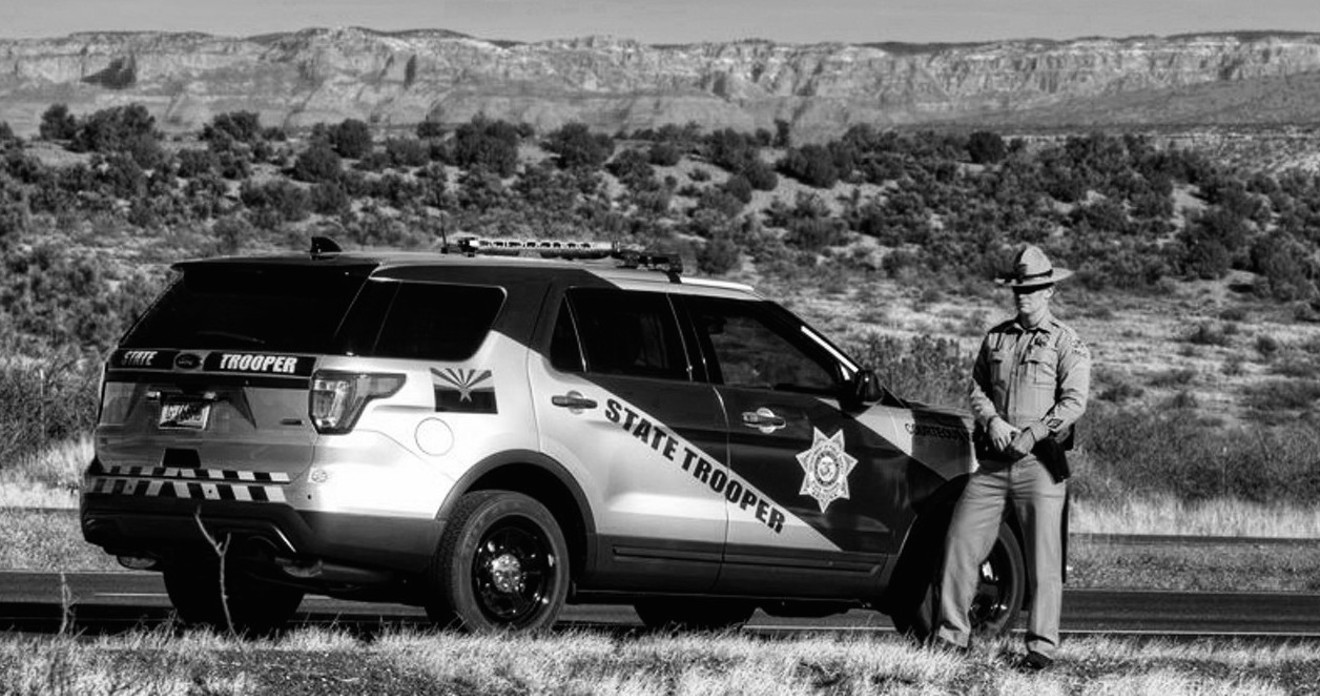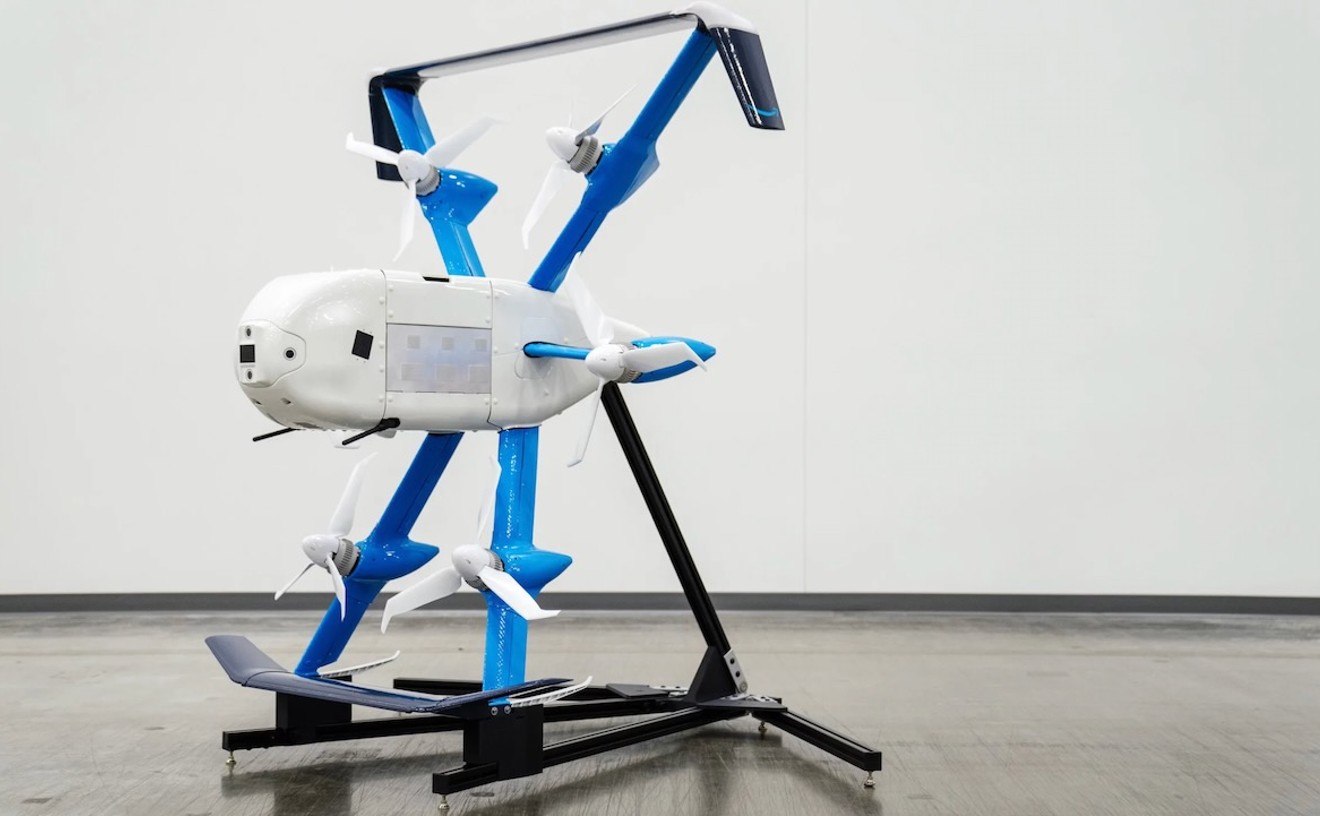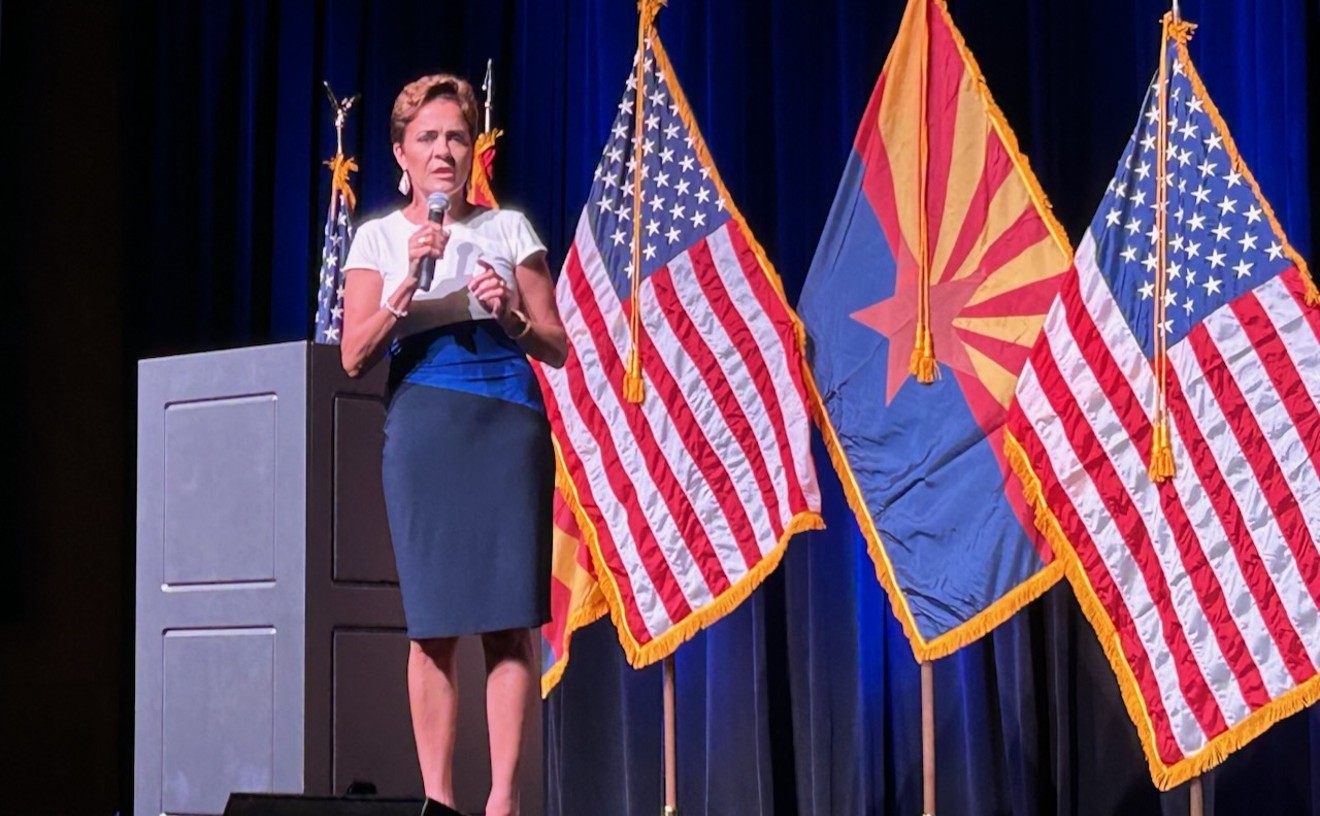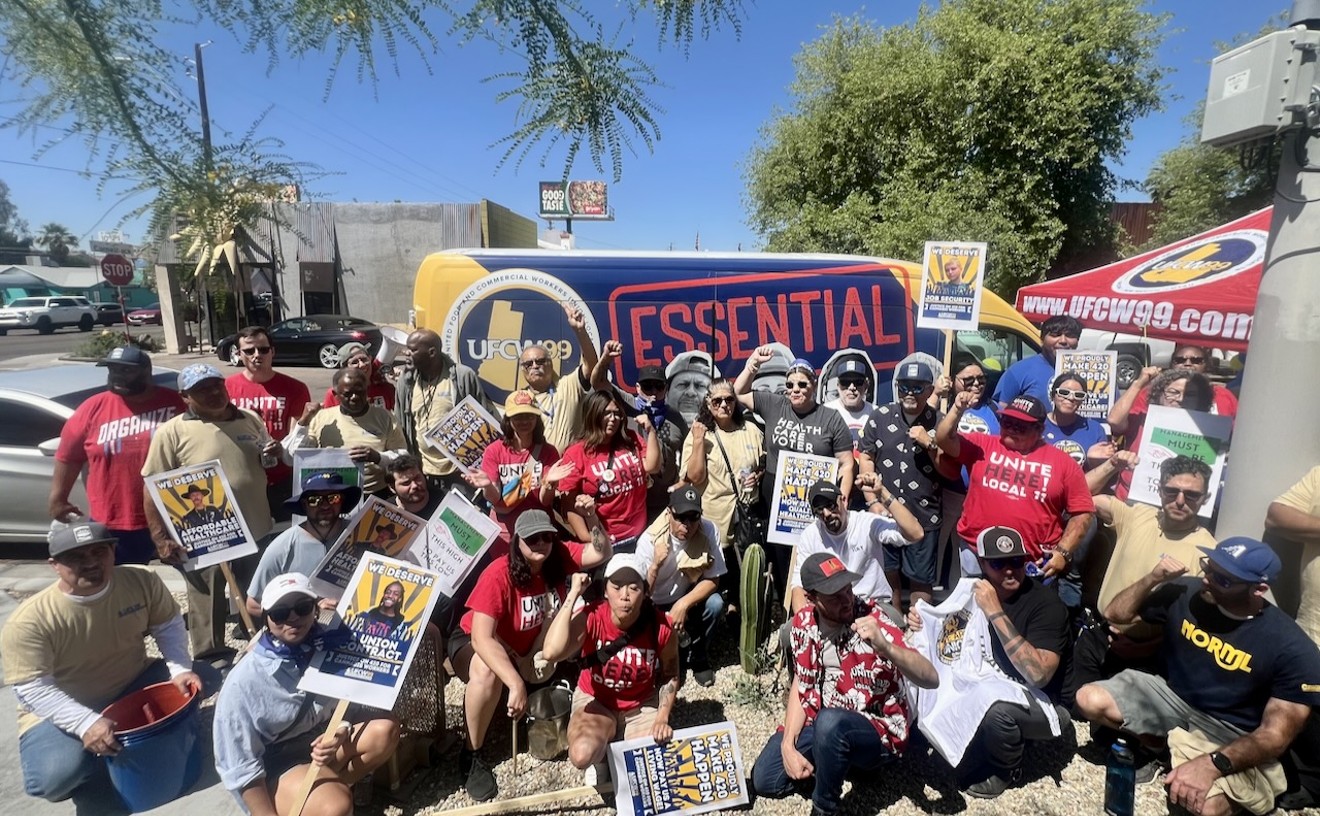Racial profiling on the highway is a widespread and persistent problem in Arizona. Traffic records show DPS officers searched black and Latino drivers at more than double the rate of white drivers, according to a Phoenix New Times analysis of four years' worth of data from Stanford University’s Open Policing Project.
Despite the search disparity, state troopers found contraband at approximately equal rates, regardless of the driver's ethnicity.
The Stanford study examined traffic stops in 20 states and found similar search trends nationwide. New Times parsed Arizona's numbers separately.
In Maricopa County, the sheriff's office has drawn attention for racial-profiling abuses. But DPS troopers search Latino motorists in this county at a much higher rate than whites, and at the second-highest search rate in the state. Only African-Americans in Navajo County were searched at a higher rate. (See graphic below.)
Here, Latinos were searched during 10 percent of routine traffic stops, African-American drivers were searched about 8 percent of the time, and white drivers were only searched during less than 4 percent of stops.
White drivers in Maricopa County: 449,118 stops by DPS troopers, 17,893 searches, 2,643 times contraband found or 14.8 percent. Hispanic drivers: 162,035 stops, 16,311 searches, 1,985 times contraband found, or 12.2 percent.
tweet this
And yet the “hit rate” on these searches — indicating whether a state trooper found contraband such as drugs or weapons — was also nearly identical for all Maricopa County drivers, regardless of race. In fact, Latino drivers here were the least likely to have contraband in their vehicles, even though they were searched with the greatest frequency.
This difference between the search rate and hit rate is crucial. It’s a key indicator when assessing bias, according to Danielle Wallace, an associate professor at Arizona State University’s School of Criminology and Criminal Justice. She told New Times that racial profiling can reveal itself when officers come up empty-handed after a vehicle search.
“Then, you have to look at why officers are searching individuals and what their suspicions are, and if their suspicions are related to some type of racial stereotype,” Wallace told New Times.
DPS declined to comment on the Stanford data aside from a brief statement.
“Without knowing the specific methodologies or information used it is not appropriate for us to comment other than to say, the Department is committed to unbiased policing and endeavors to ensure that all persons having contact with the Department are treated with courtesy and respect,” a spokesperson, Bart Graves, wrote in an email.
In a Herculean effort to chronicle police interactions with drivers, researchers at Stanford collected data on more than 60 million state patrol stops from 2011 to 2015 in 20 states.
According to Sharad Goel, an assistant professor at Stanford University and an author of the study, they chose state patrol data because it was more limited. “But of course, a lot of policing is happening on the local level rather than the state level,” he said, adding that researchers are preparing to analyze the largest police departments nationwide.
Some Arizona counties had a wide gulf between the search rates of white and nonwhite drivers. Black drivers in Apache, Navajo, and Greenlee counties were searched at much higher rates, as were Hispanic drivers on highways in Pinal and Yavapai counties. On average, white drivers across the state were searched during just 3 percent of traffic stops; black and Latino drivers were searched around 7.5 percent of the time.
“It’s troubling, but it’s not surprising to me,” said Alessandra Soler, executive director of the American Civil Liberties Union in Arizona. “There’s been very little effort from police departments in this state to address what is systemic racism within their departments.”
Soler would know. Arizona’s ACLU chapter filed suit against DPS a decade and a half ago, arguing that the department unfairly scrutinizes nonwhite drivers.
The Arizona chapter of the American Civil Liberties Union filed a class action lawsuit against DPS and the state in 2001 on behalf of African American and Hispanic motorists. The five-year legal tussle resulted in a 2006 settlement that required DPS to maintain records of all stops, record stops using patrol-car video systems, and implement a citizen advisory board.
Afterward, the ACLU analyzed DPS traffic stop data obtained as a result of the lawsuit. Their 2008 study, “Driving While Black or Brown,” shows how little has changed. Between July 2006 and June 2007, African-American and Latino drivers were more likely to be searched by DPS officers: On average, they were searched during 10 percent of traffic stops.
When reading the Stanford results in light of the past lawsuit, it seems DPS practice on Arizona highways hasn't changed all that much.
“You would think that from the rhetoric we hear from police departments and sheriff’s offices, that the problem doesn’t exist,” Soler said.
The new numbers from the state patrol coincide with the ongoing court-ordered reform and oversight process at the Maricopa County Sheriff's Office.
Recently convicted former Sheriff Joe Arpaio built a shameful reputation by racially profiling Latinos in immigration raids, unlawful detentions, and traffic stops. His office's practices were eviscerated in the Melendres decision, a 2011 injunction and 2013 ruling in which U.S. District Judge Murray G. Snow mandated reforms to the sheriff's department. These reforms bore similarities to the ACLU's settlement with the DPS.
With a new sheriff, Paul Penzone, who ousted Arpaio in the election last fall, the office is in the midst of an effort to change, under the watchful eye of the court.
“Melendres obviously prompted reform in the agency from the time the first injunction was issued in 2011, and the agency has been working hard on compliance with that order since then,” Maricopa County Chief of Staff and Special Counsel Stephanie Cherny told New Times.
“Obviously, Sheriff Penzone has different priorities — that’s very obvious from the campaign and through his public statements to date — than his predecessor did,” Cherny continued. “And community involvement and community engagement, rebuilding the trust with the community, is one of those top priorities.”
Penzone’s agency has attempted to rebuild that trust with a series of community meetings since his January swearing-in.
MCSO Chief of Compliance Russ Skinner emphasized the mechanisms that enable the agency to monitor traffic stop data, including body cameras and a system that tracks employee behavior and comments. Arizona State University analyzes the department’s traffic data in an annual report.
Of course, the new study only confirms that racial profiling in Arizona isn't contained to the tenure of one sheriff in Maricopa County.
“What we learned from the Arpaio litigation was that there was really nobody holding officers accountable,” Soler said. “It starts from the top. You need to have good, strong policies and disciplinary practices. And oftentimes, that’s not prioritized.”
Wallace, who assists the Maricopa County Sheriff’s Office on training related to traffic stop data, said that researchers have a lot to pore over in the state patrol data. She said that “racial bias is very much happening; there’s plenty of departments suffering from it.” Profiling and institutionalized bias, Wallace said, can rear its head anywhere if people aren't vigilant.
“It’s amazing how old practices will come back if people aren’t really, really aggressive about staying on top of it,” she said.
Fighting off these entrenched practices can take the form of data collection, training, and disciplinary measures that hold officers responsible, the ACLU says.
“Racial profiling continues to exist at all levels in the Department of Public Safety,” Soler said. “I hope they would use this as an opportunity to take a good, hard look at why this is continuing to happen.”
Below is a table of DPS search rates in all Arizona counties from 2011 to 2015, beginning with the highest and sorted by driver's race.













